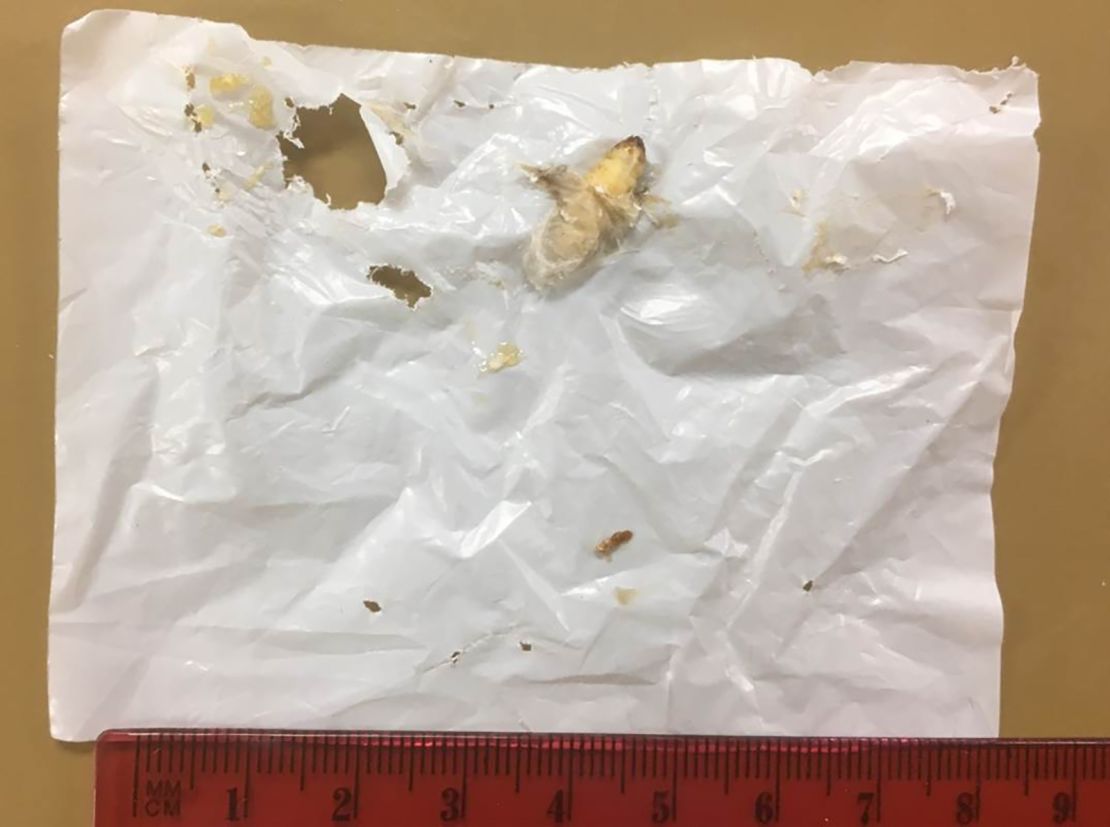The tiny waxworm went from zero to hero in 2017 when researchers discovered the caterpillar could potentially help solve one of the world’s most pressing environmental problems: plastic waste.
The creature can chomp through plastic, even polyethylene, a common and non-biodegradable plastic currently clogging up landfills and seas.
Now scientists have a much better understanding of how the grub is able to do this – and it comes down to its gut bacteria or microbiome. The findings, which were published in the journal Proceedings of the Royal Society B Tuesday, could guide efforts to find an effective biodegradation system to tackle plastic waste.
“We found that waxworm caterpillars are endowed with gut microbes that are essential in the plastic biodegradation process, ” said Christophe LeMoine, an associate professor and chair of biology at Brandon University in Canada.
“This process seems reliant on a synergy between the caterpillars and their gut bacteria to accelerate polyethylene degradation.”
Many animals are thought to have a microbiome and it plays a key role in keeping humans healthy.

Not an immediate solution
In the wild, the larvae of the greater wax moth is considered a pest, because it acts as a parasite in bee colonies, eating away at the wax from honeycomb.
Its plastic-eating skills were discovered accidentally when an amateur beekeeper in Spain plucked some of the pests from her beehives and put them in a plastic bag. The worms eventually ate little holes in the bag, chewing through the plastic at an alarming rate.
Federica Bertocchini, the beekeeper, who also happened to be a scientist at the Institute of Biomedicine and Biotechnology of Cantabria, then put together a study to see just how good the little grubs were at breaking down plastic. The team found the wax worms broke down polyethylene plastic bags faster than other methods.
LeMoine said the waxworms were not an immediate solution to plastic pollution, with still more work to be done to understand how the caterpillars and the microbes in their digestive tract work together before it can be adapted and replicated on a large scale.
One issue could be how to handle the toxic substance the caterpillars excrete when they are fed plastic.
Also, while they found that certain gut bacteria could survive on plastic for more than a year, it took longer for the plastic to be broken down than when the larvae ate it, suggesting the caterpillar was instrumental to the process.
“Basically, the microbiome and host work synergistically with one another for effective plastic metabolism. Rather than a single species of bacteria it is most likely several species working together to facilitate this process,” he said.
“While there has been some good progress in figuring out some of the key components, there are still a few more puzzles to solve before this can be effectively used to solve our plastic problem, so it’s probably best to keep reducing plastic waste while this gets all figured out,” he added.
CNN’s AJ Willingham contributed to this report.

